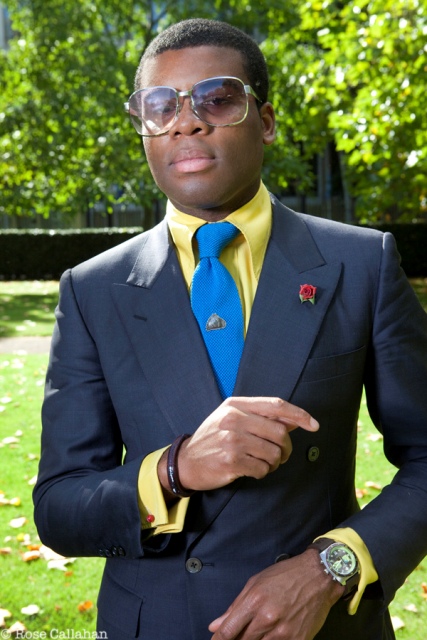In a trickle of hours, the GBP will have decided on the face that will be held responsible for its ills next. No matter the platforms offered, the glib slogans crafted, Politics will never truly offer something for everyone. This is a relief - to extend such a universal appeal to the world would render the system boring and wanting in what it thrives on: disagreement, conflict, uneven playing fields and manipulation. After a fashion, it's my kind of game
Under the remit of this column, the sartorial facilities of the candidates bear no scrutiny - they're fit for the pristine surfaces of appearance that all media friendly corners of the 21st century proffer to society. Why pay attention to any or all of the party leaders when you can be diverted by the matching sheen of their ties to that of their overly effective hair product? No PR officer could convert this into a Good Thing
With that in mind, I am not here to judge the policies of the World's Last Well Dressed Politicians; you have liberal newspapers for that. But I prefer world stage representation to be in something other than questionable bespoke or a High Street premature shot. The most favourable examples have a number of drawbacks, however; not least that they are all from times past and have a tendency to be soaked in blood and rumpus
In another life, I would likely have been his nephew
El Hadj Omar Bongo Ondimba, who died last June following a heart attack and a short struggle against the cancer - or was it another incurable? - may have been the most stylish of this continent's politicians to have lived. Consistency ensured that he remained so even after the 1970s, my personal golden age of black style, had concluded and lent its remains to enduring mockery from future, less dynamic generations
The frequency of Gabon on my radar has increased since Ghana's 2007 oil discovery; as I continue to acquaint myself with its socio-political nuances, I've started to consider the exertions on local and governmental African life that the resource represents. Nigeria? Thank you, but I prefer my oil rich neighbours to be of the Francophone variety
Beyond the very obvious reason for an interest in African leaders, I am perennially interested in how they inspire admiration, love and fealty amongst the ordinary citizens they rule. By all accounts, Bongo was quite the incarnation of charisma, or perhaps I'm simply conflating that with power. From one tiny sub-Saharan country, he wielded a strength and influence in France that was normally reserved for dignitaries who were officially empowered there
He was also stylish, in the sense that his non-model shape posed absolutely no barrier to a great taste in clothing and the nous to wear it. Like other post-colonial African leaders who at one point wished to remove all visual signifiers of their European yokes, he adopted the Mao suit, albeit alongside Western traditional tailoring that was worn as elegantly as his bespoke French cuts, which, during his first decade in power, paid slight lip service to the unorthodox detailing of the time. He and his entourage were exceedingly well served in Paris - Valentino would have them personally escorted during their excursions:

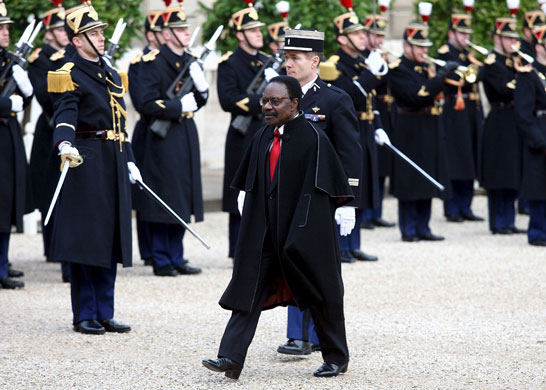
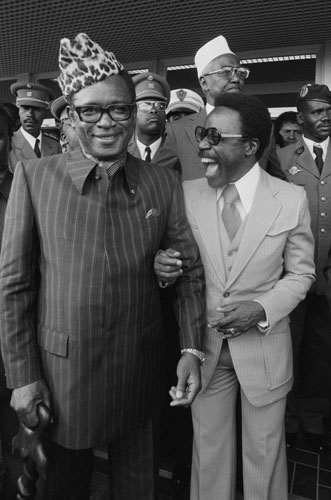
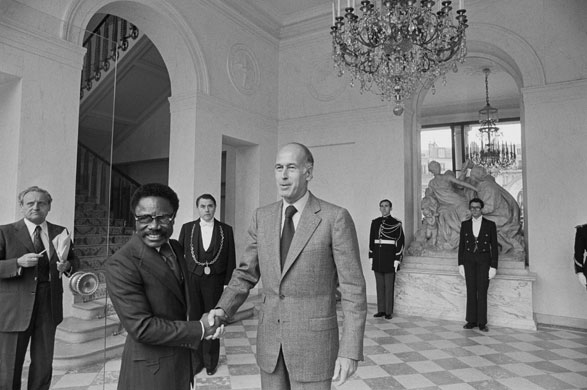
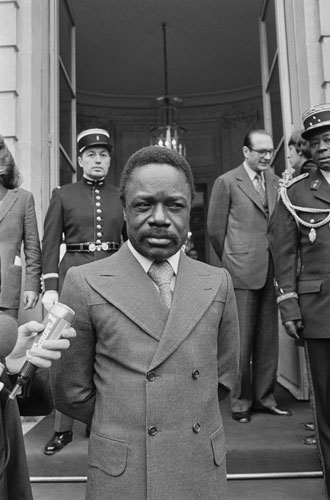
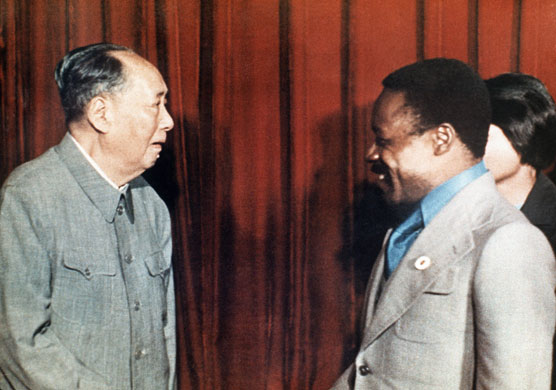
Sharing a more direct relationship with my people was Félix Houphouët-Boigny, the Cote d'Ivoirian leader who aided in the ousting and exile of legendary independence-era Ghanaian president Kwame Nkrumah. The Sage of Africa, as he was known, favoured the aureate life, amassing as he did a sizeable personal fortune, shares in jewelry firms and urbane Parisian property holdings. Amongst his varied, swank displays of wealth, he funded the construction of the world's largest church and held a particular fondness for sculpted gold
Houphouët-Boigny's leadership imbued the Cote d'Ivoire with outstanding prosperity during the bulk of his incumbency. His own relationship with France was a cornerstone of his national and foreign policies, influencing facets of his involvements across the entire continent. Indeed, he remains fondly remembered in his homeland, meriting the nickname of "The Wise," and also holds the dubious post-mortem distinction of appearing on a Lil Wayne record sleeve - but then, what is life without a little indelicacy?
Françafrique Mode, indeed
The markedly authoritarian and dictatorial Mobutu Sese Seko of Zaire was known for successfully courting generous sums of foreign aid, policies that ultimately did the DRC little favours, public executions, kleptocracy and rather capricious opinions of his allies such as the United States. He was also known for his signatures of toques and tortoiseshell eyeframes, alongside a curious taste in leisure suits. Other purported proclivities included regular travel with a money-filled Louis Vuitton suitcase, Concorde chartering for regular Paris shopping junkets and flying in his hairdresser from New York to a personally commissioned airport in his birth village, where he had also built a palace:
Haiti's late President for Life, Francois Duvalier, infused an extra dimension to his own vicious consolidations of power through his study and public acknowledgment of voodoo traditions and its
houngan and
bokò practitioners - Baron Samedi became something of a muse. Who knows what his decisions cost his
loa; it is estimated that 30,000 political deaths were enabled during his presidency. He too treated himself to ill-gotten finery in his time:
Finally, I submit as bonuses:
Jean-Bédel Bokassa of Central Africa, a Napoleon fetishist, alleged cannibal and owner of the world's most expensive shoes; a pair of bespoke pearl-studded Berlutis for his coronation, gifted to him by the French government
Francisco Franco
Kwame Nkrumah and Haile Selassie
Patrick Hurley, Chiang Kai-Shek and Mao Tse Tung
A monument to former Turkmenistan President for Life, Saparmurat Niyazov
The United Kingdom may never quite approach such ostentation or indulgence of the self, nor would it be essential for it to do so. And it is preferable for a myriad of reasons that such leaders remain
sui generis. But out of the lasting impressions these men have left on me, an old, persistent truism arises: "Aren't all the best fascinations paradoxical?"





















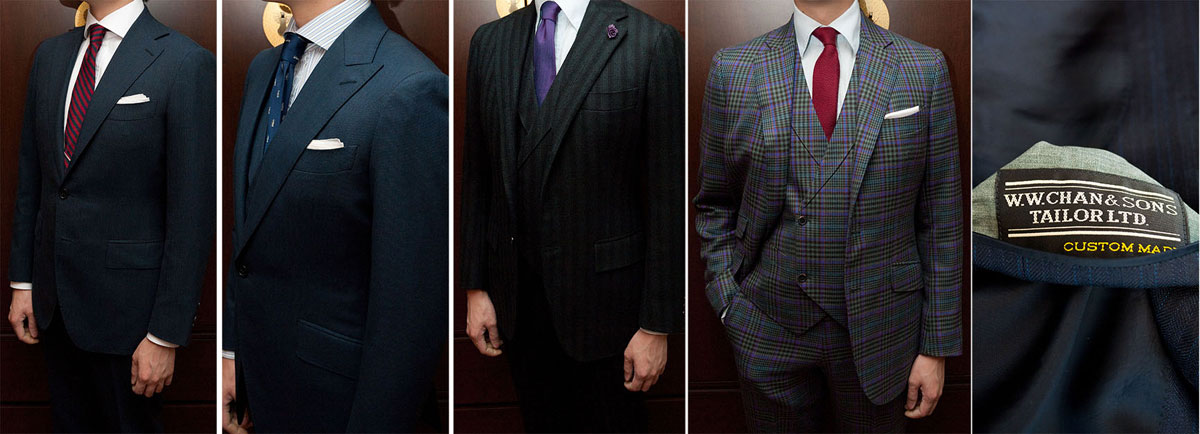


























.jpg)




